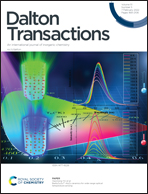para-Aminobenzoic acid-capped hematite as an efficient nanocatalyst for solvent-free CO2 fixation under atmospheric pressure†
Abstract
Utilization of carbon dioxide by converting it into value-added chemicals is a sustainable remedy approach that stipulates abundant, cheap, non-toxic and efficient catalytic materials. In this study, we have demonstrated the use of para-aminobenzoic acid-capped hematite (PABA@α-Fe2O3) as an efficient nanocatalyst for the conversion of epoxides to cyclic carbonates utilizing CO2. The developed PABA@α-Fe2O3 nanocatalyst along with a cocatalyst, tetrabutylammonium iodide (TBAI), was able to convert a variety of epoxide substrates into their corresponding cyclic carbonates under atmospheric pressure and solvent-free conditions. The efficient catalytic activity of the material is attributed to the synergistic effect between α-Fe2O3 and the amine group of the PABA molecule present on the surface. Furthermore, the recyclability study and post-catalytic analysis revealed that the developed catalyst can be used for multiple catalytic cycles due to the stable and robust nature of the nanocatalyst. The choice of the PABA@α-Fe2O3 nanocatalyst is indeed a sustainable approach from the CO2 capture and utilization point of view.



 Please wait while we load your content...
Please wait while we load your content...